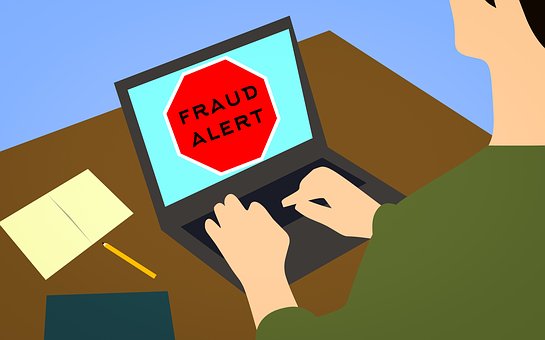
Image by mohamed Hassan from Pixabay
A new kind of influencer fraud has emerged that might be far worse than purchasing fake followers, likes or engagement. The tactic defrauds both sponsors and followers.
According to influencer marketing service Carusele, certain influencers promote contests for cash giveaways on Instagram, a favorite platform for influencer marketing. Sometimes they include a charitable donation to encourage participation in the giveaway. After the post accumulates a massive amount of comments and likes from people attempting to win the contest, the influencer changes the caption of the post to label it a sponsored post. They can then report the fantastic engagement they earned to their brand sponsor.
Carusele calls the trick one of the worst examples of influencer fraud it has seen.
Brands can spot such fraudulent sponsored content engagement by capturing before and after images of the posts.
This fraud tactic is following the same pattern as the fake followers fraud. The rise in influencers purchasing their followers came after brands continued to prioritize partnering with influencers who had large followings. They only looked for a big number, and never dug into the quality of those followers. The same thing is happening here as marketers shift to prioritize engagements as a metric of success. Since the platforms removed fake engagements, these influencers have found a new way to falsify this information.
Types of Influencer Marketing Fraud
Purchasing fake followers is the oldest and possibly still the most common type of influencer fraud. When influencer marketing initially became popular, brands sought social media whizzes with large followings. That motivated influencers to buy fake bot accounts to follow them. Brands that fell for the scam paid hefty sums to influencers with millions of followers but found no sales impact or marketing results.
Twenty percent of marketers surveyed by influencer marketing platform Buzzoole called fake followers the top influencer marketing challenge, more than any other issue other than measurement, cited by 45%. Social media measurement is certainly a challenge, but not a fraud.
The fake follower schemes prompted marketers to examine influencers’ engagement levels, including likes, shares and comments on their posts as better indicators of social media influence. As a result, influencers turned to apps that automate thousands of phony comments and likes.
In another trick, influencers and aspiring influencers create fake sponsored content, ordinary posts designed to look like ads, in order to build credibility with advertisers.
Solutions to Influencer Fraud
Social media measurement tools. To protect themselves against fraud, brands can employ a social media measurement tool to determine the value of influencer marketing and demonstrate its value to management. A social media monitoring service can track and measure an influencer’s engagement levels, spot red flags and predict a campaign’s potential return on investment. The monitoring service can also uncover complaints or other insights about the influencer in other accounts or on other social media services.
Scrutinize profiles, content and followers. Reviewing an influencer’s profile and content can reveal potential fraud flags. While automated tools exist, manual reviews by human analysts, although time consuming and more costly, may be more reliable. Check all the influencer’s social media profiles, both organic posts and sponsored posts, and comments on posts.
Increased scrutiny of influencers’ followers can reveal potential imposter influencers and their fake followers. Some red flags for fake followers include lack of profile images and bios and large numbers of suspiciously generic or repetitive comments. Unless an influencer was previously a famous actor, professional athlete or other type of celebrity, quickly obtaining a million followers is extremely questionable.
Don’t rely on one metric. When marketers focus on a single metric to measure success, influencers learn how to manipulate the metric to improve their perceived value. The best strategy is to look at influencer marketing holistically and take into account a range of factors to measure influencer marketing. One measurement trick for sponsors: Require the influencer to include a unique link that tracks traffic to your website with UTM codes. Then measure the number of click-throughs and subsequent conversions and sales. Analyze the log data carefully for repeat or suspicious click-throughs, but mostly pay attention to actual sales and profitability.
Embrace the earned media approach. When done in isolation, paid influencer placements are unlikely to “move the needle,” especially if they aren’t compelling and not clearly aligned with the influencer’s persona. The traditional PR approach of seeking earned media mentions can improve the overall effectiveness of influencer marketing campaigns. PR pros can partner with micro-influencers and nano-influencers and offer them free content, product samples, company tours or other special services in return for brand mentions.
Pressure social media networks. While Instagram and Twitter have taken steps to eliminate bot accounts and combat influencer marketing fraud, more work remains. Industry trade groups can encourage social media platforms to take additional steps. Continual diligence can contain the scams.
Bottom Line: Changing popular posts on giveaways to sponsored content presents a new and troubling form of influencer fraud. Brands can protect themselves from that deception and other types of fraud by carefully vetting influencers.
Schedule a Free Online Demo of the Glean.info Media Monitoring & Measurement Dashboard
William J. Comcowich founded and served as CEO of CyberAlert LLC, the predecessor of Glean.info. He is currently serving as Interim CEO and member of the Board of Directors. Glean.info provides customized media monitoring, media measurement and analytics solutions across all types of traditional and social media.




